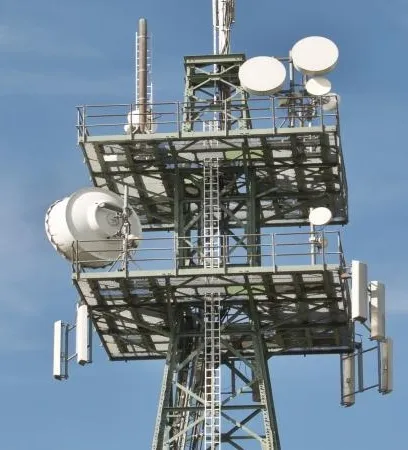Is the Outlook for the Indian Telecom Tower Industry Now Stable?

Synopsis
Key Takeaways
- ICRA has revised the outlook of the telecom tower industry to ‘Stable’.
- Improved cash collections have led to reduced receivable days.
- Operating income growth is expected to be 4-6% for FY2026.
- Cash balances are projected to increase significantly.
- Reduced external debt will enhance financial metrics.
New Delhi, May 19 (NationPress) In a significant turnaround, the credit rating agency ICRA has upgraded the outlook for the Indian telecom tower sector to ‘Stable’ from ‘Negative’ due to robust customer collections and the clearance of overdue payments.
The industry had previously been challenged by prolonged receivables caused by delays in payments from various telecom service providers.
However, the landscape has notably changed, with timely payments to tower companies now leading to a decrease in receivable days to approximately 45-60 days, well below ICRA’s previous negative outlook threshold of 80 days.
This improvement, along with the recovery of past dues, has significantly bolstered the liquidity profile of the telecom tower sector and lessened the dependency on external financing, which is expected to positively impact the industry’s return metrics.
ICRA predicts that the tower sector will achieve an operating income growth of 4-6% and maintain operating margins (after energy revenues are accounted for) at approximately 70-75% for FY2026.
Furthermore, with the easing of working capital needs, the liquidity position is likely to enhance, with cash reserves in the industry projected to rise to around ₹5,500-6,000 crore, up from ₹2,200-3,000 crore previously.
“The enhancement in the credit profile of several key telecom service providers, who are clients of tower companies, has improved their working capital cycle,” stated Ankit Jain, Vice President and Sector Head of Corporate Ratings at ICRA.
Additionally, a substantial amount of past dues has been cleared, reversing provisions made earlier in FY2023.
This has improved cash flows and overall liquidity across the sector. Collections are anticipated to remain timely, keeping industry debtor levels under 60 days moving forward.
“As a result, there is expected to be a reduction in external debt, with ICRA estimating net external debt/OPBDITA at around 3.4x for FY2026,” Jain added.
With enhancements in the credit quality of certain customers and successful fundraising efforts by some, these clients are likely to resume their capital expenditure plans.
The demand for telecom services, particularly data, is experiencing robust growth in India, driving continuous network expansion and upgrades by telecom operators, according to the report.










